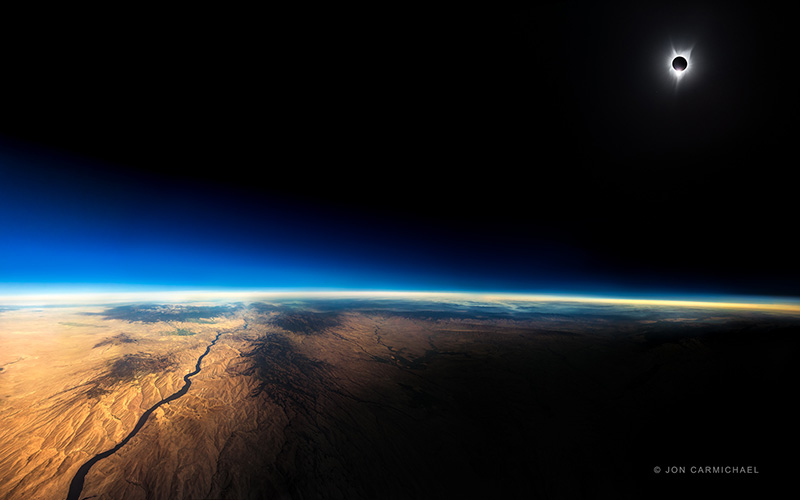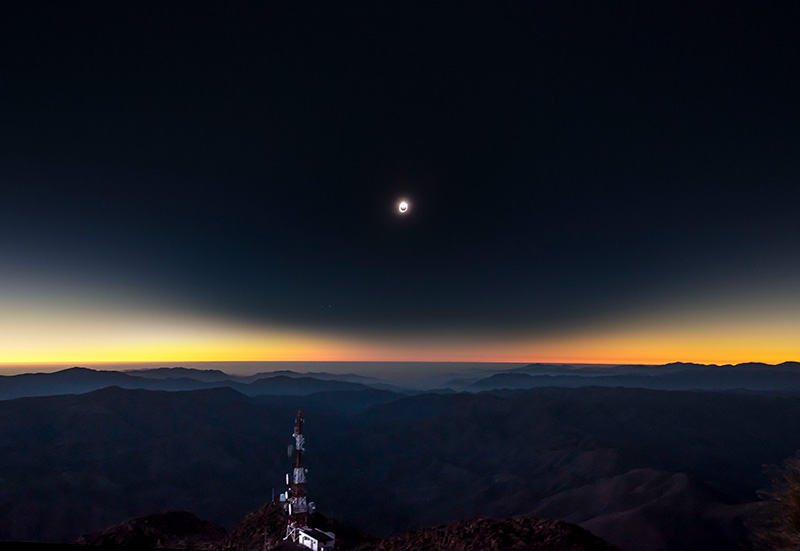Tips for Safely Photographing a Solar Eclipse
Prevent Blindness President and CEO, Jeff Todd, interviewed astrophotographer and visual storyteller Jon Carmichael about how to safely photograph a solar eclipse. Jon Carmichael took what has become an iconic photo of the 2017 total eclipse from a commercial airline flight and is passionate about making sure that everyone gets the most out of their eclipse experience.
Solar Eclipses + Your Eyes

“108”
A photo of the 2017 total eclipse, taken from a commercial airline flight, by Jon Carmichael. © Jon Carmichael. All rights reserved


